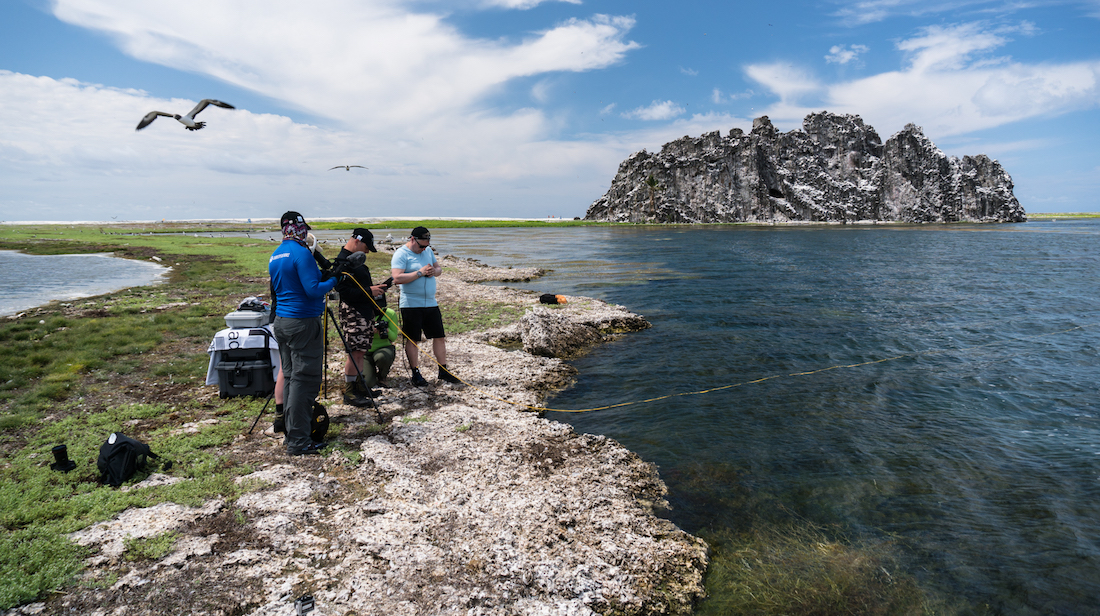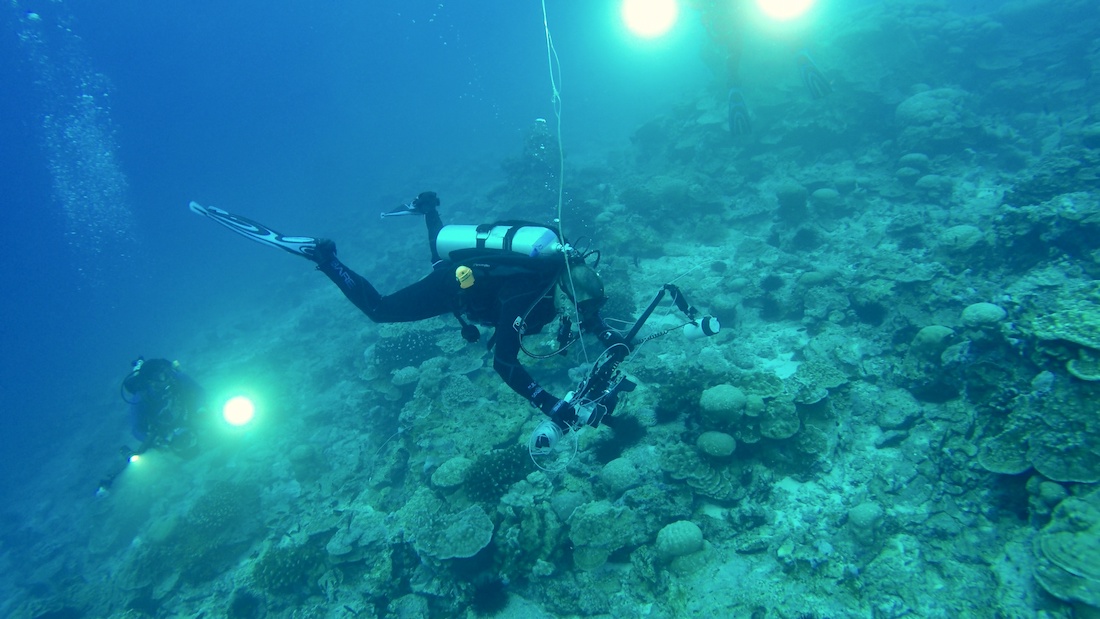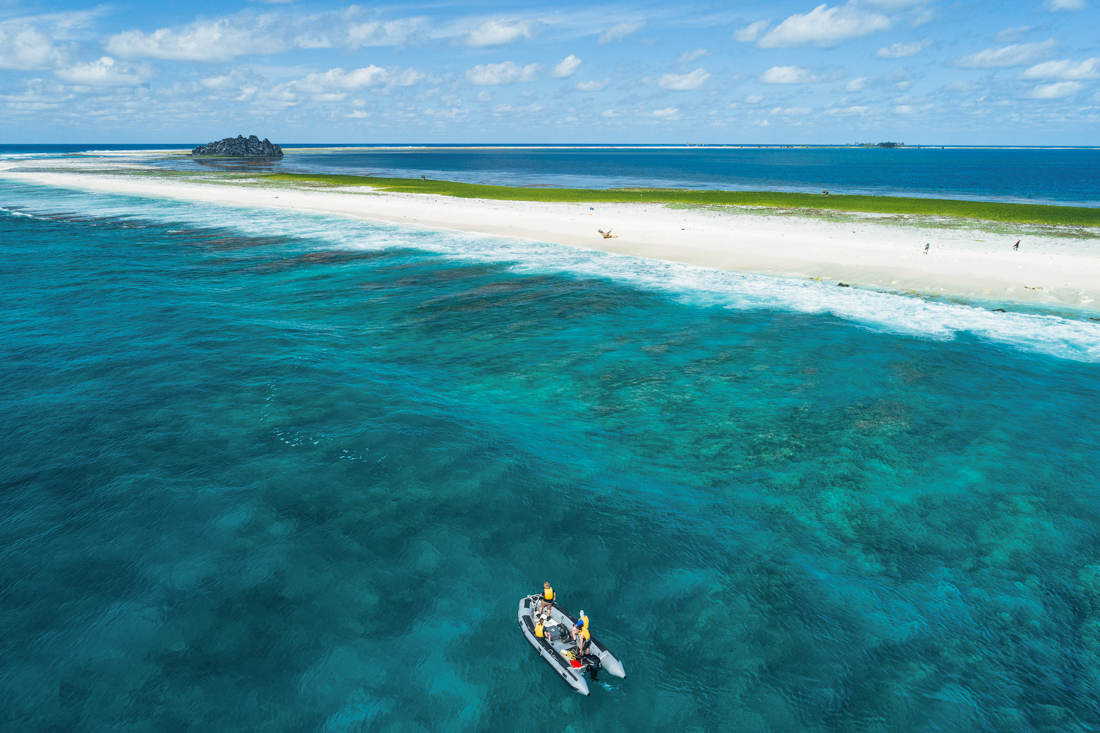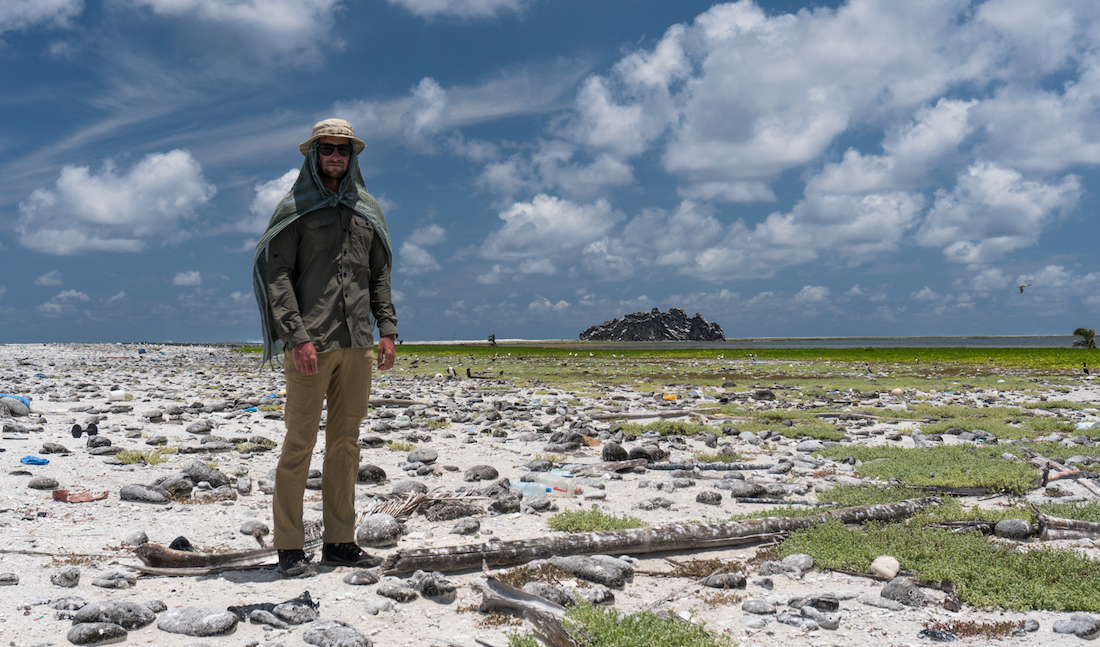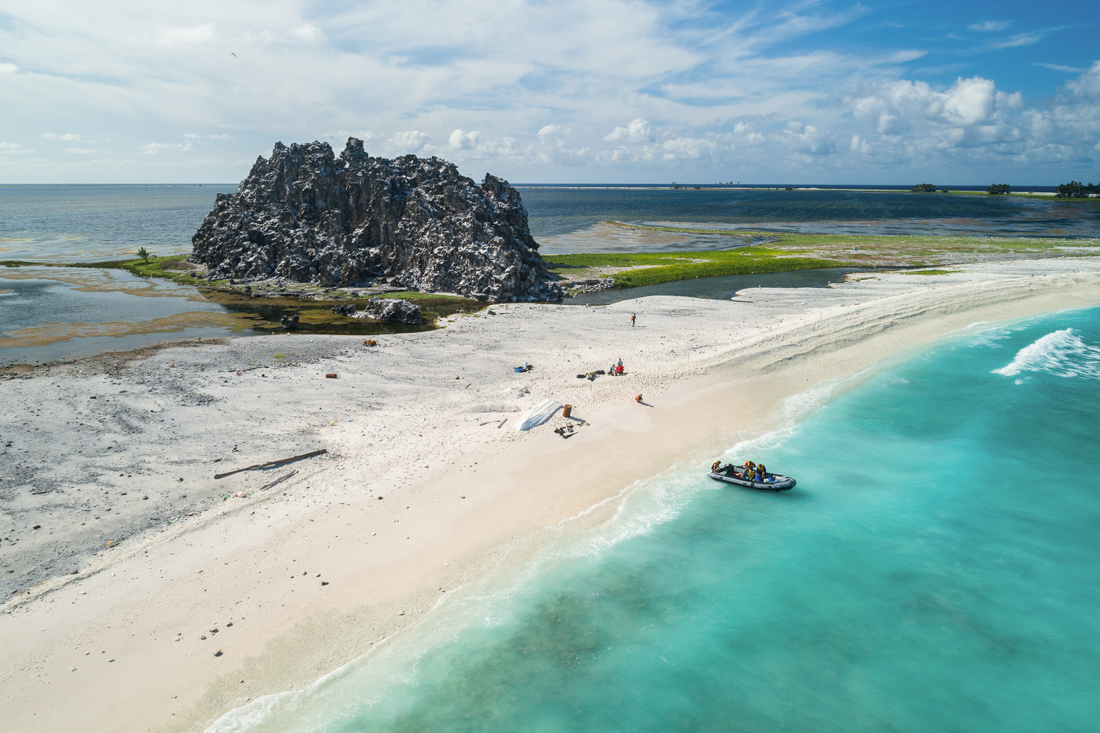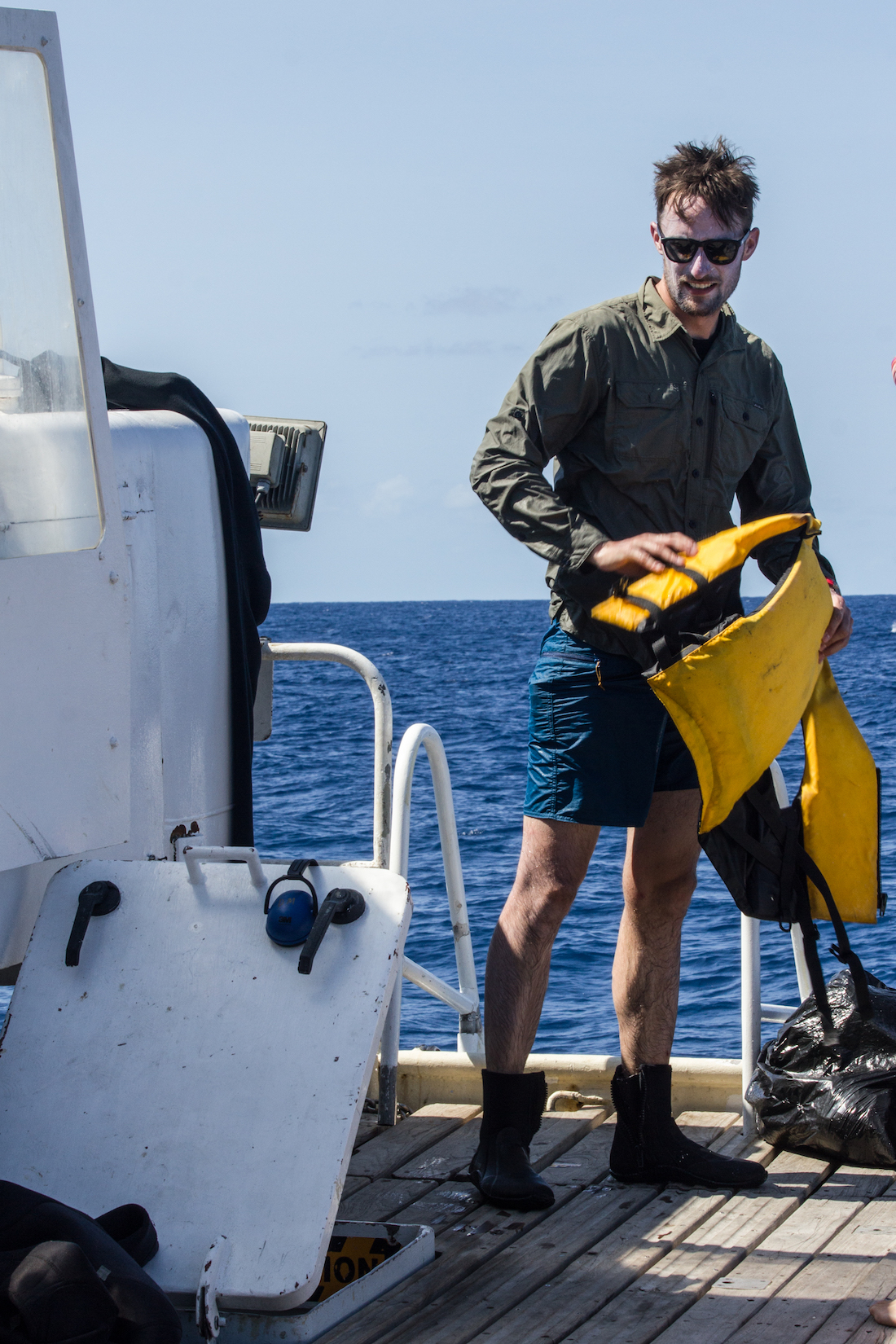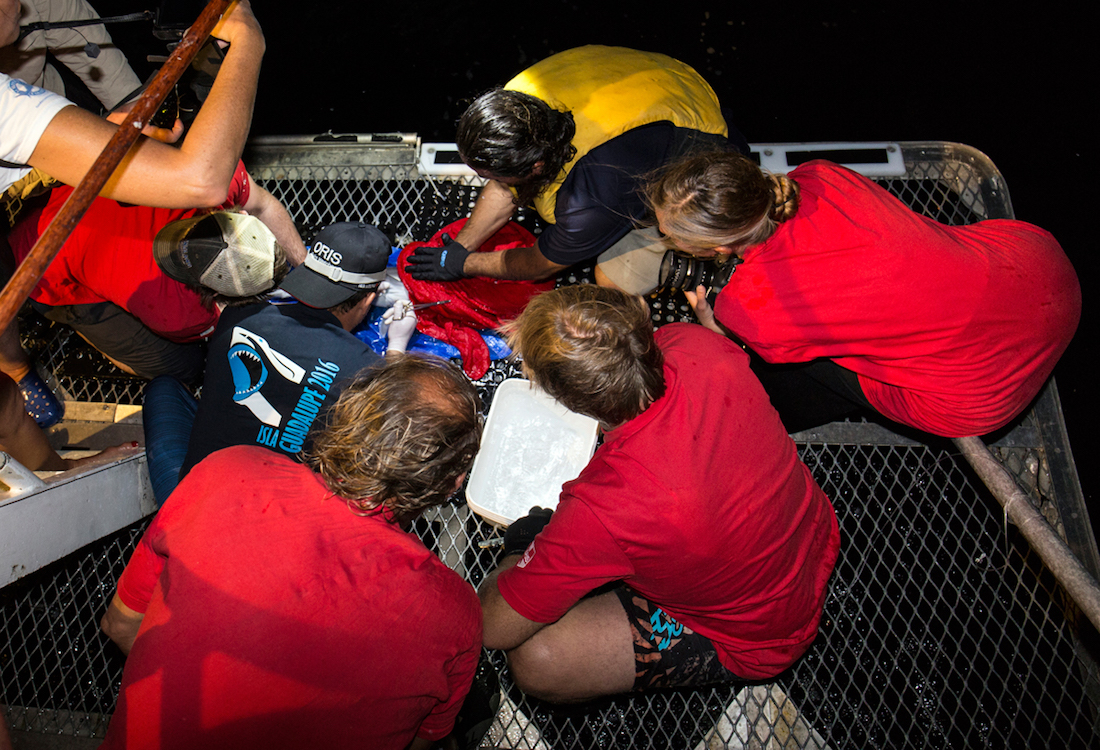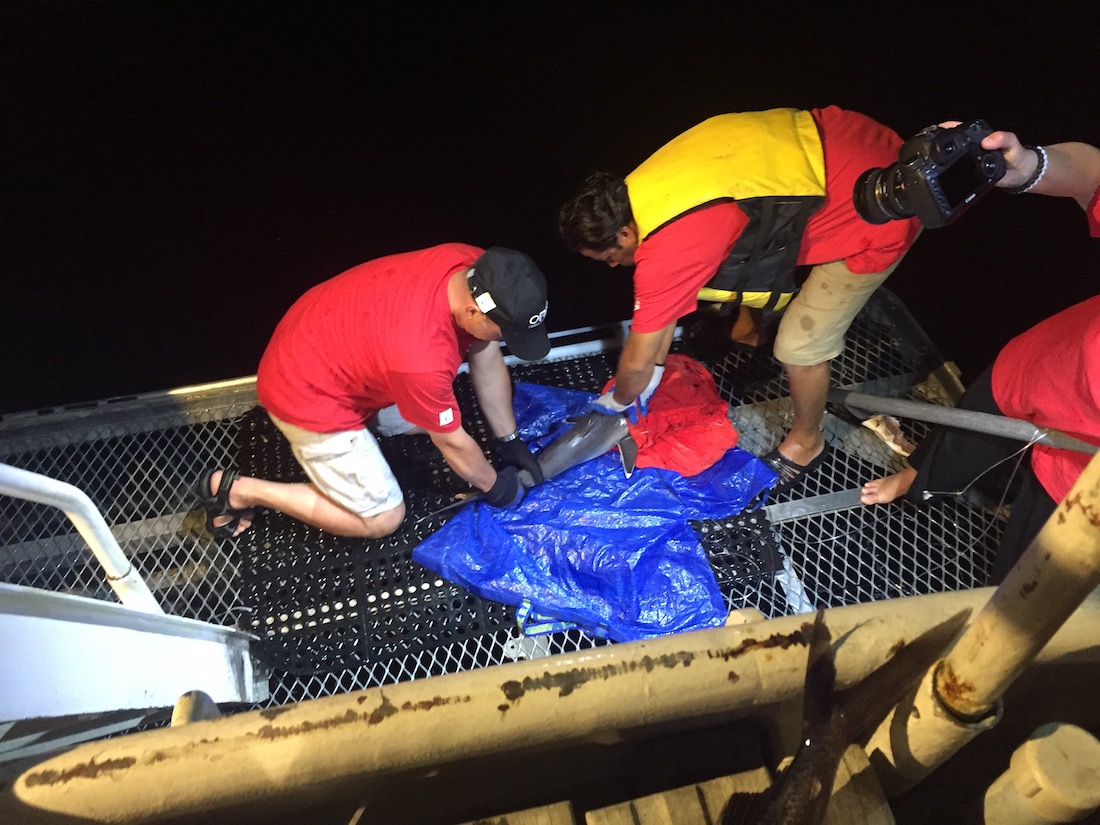While entirely optional, when offered the chance to skip some of the diving and go ashore to explore Clipperton and support the scientific projects, I leapt at the opportunity. Ease of access to the island is entirely based on a number of seemingly ever-changing factors. The crew (who would be piloting the skiff through the breaks) would try to find what looked like a calm spot to place the boat on Clipperton’s shore. All those interested in going ashore would prep all their gear and clothes for a worst-case scenario; flipping the skiff and having both you and all of your stuff dumped into shallow turbulent rocky waters, hopefully clear of the boat. I packed sun cover, proper boots, and my camera along with sunscreen and two liters of water. While bumpy, the ride in was hardly dangerous. Once we made shore, everyone had to jump out and either get the hell out of the way or help to spin the skiff around. This was the riskiest part of landing on Clipperton, as the boats were hit by multiple large waves as we struggled to remove all of the gear and occupants and then turn the boat around so that it could face the waves and be pushed free of the rocks and soft sandy bottom.
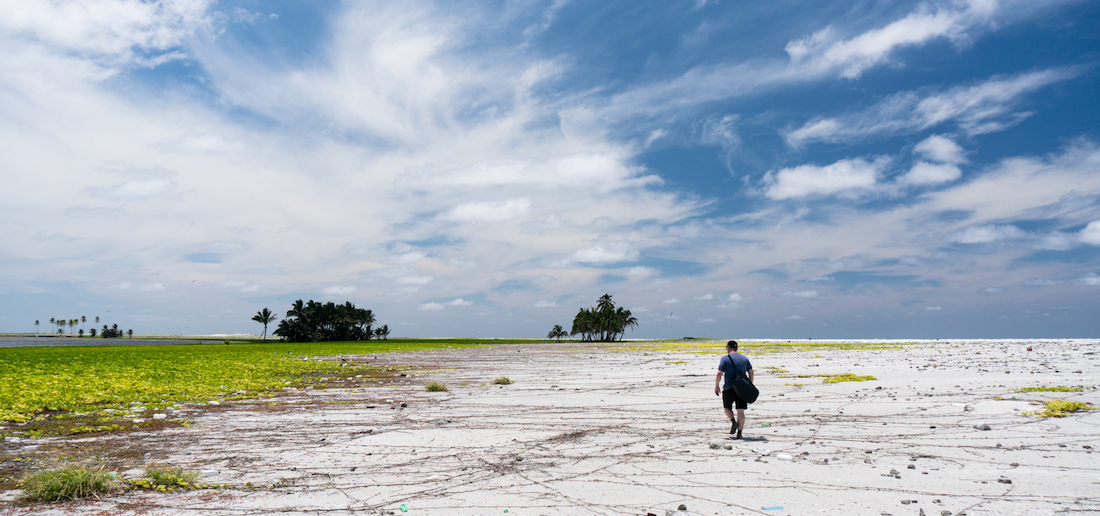
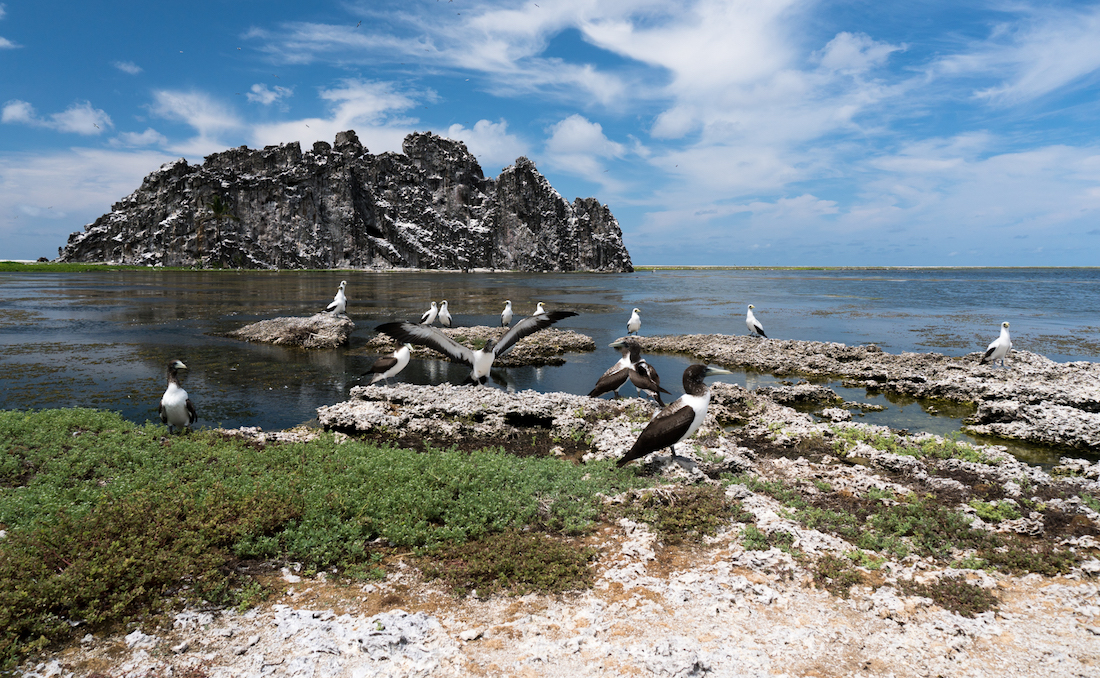
Clipperton is a very strange place, with tropical beach views cut by flat arid landscapes similar to the backdrop of some old Star Trek set pieces. Almost entirely flat and with only sparse tree coverage, Clipperton is home to a great many birds, bright orange crabs, and remnants of the attempts to colonize its calloused shores. In total, I would take three trips to the island and walk a meandering twenty kilometer route along its eastern exposure.
The only thing that matched the abundance of life on Clipperton was the truly saddening amount of garbage and debris that could be seen nearly everywhere we went. In some parts, the garbage was so prolific that it made up a large portion of the ground cover. Birds nested in piles of old flip flops, crabs huddled under plastic water bottles, tiny colonies making due in the detritus of a faraway land. Seemingly in the time since Cousteau landed in these waters, Clipperton had become a kingdom of bottle caps, toothbrushes, and plastic bottles, especially along the prevailing shoreline. Proof that the world is smaller than we think and, when plastic can last for generations, the sea will carry it to all ends of the Earth.
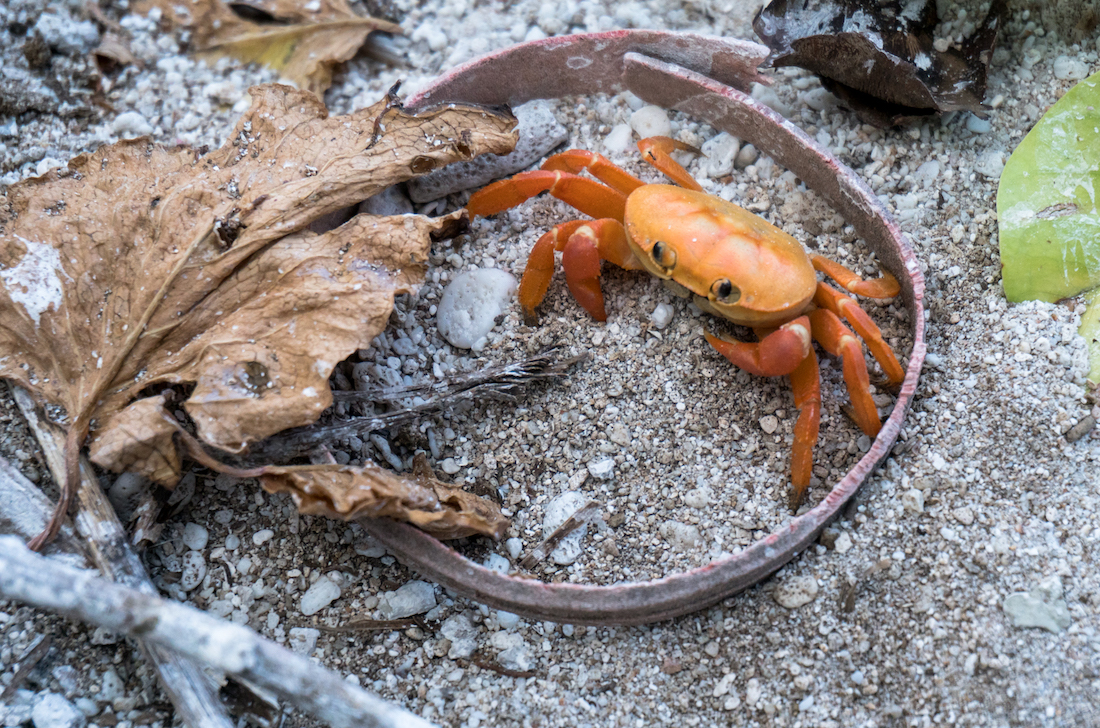
Our first day on the island, May 4th, sees a skiff flipped in the breaker, its crew left to swim back to the Under Sea. While the skiff was recovered without considerable damage, it is a reminder that this wasn’t just a day trip to a pretty beach. Michel and Julie have brought a great deal of hardware to the island in the hopes of both better understanding this once insulated ecosystem and to share the scientific goals with a worldwide audience. Using a satellite internet system called a BGEN, Michel and Julie are able to live chat with classrooms via the very impressive “Exploring By The Seat Of Your Pants” program. You can watch the original live stream here:
On my second trip to the island, we land closer to the northeastern corner of the island, just south of the wreck of the Lily Mary. Rounding the corner of Clipperton’s landmass, we came across a sporadic collection of palm trees, mid-century construction vehicles, and a great deal of long-forgotten World War II ammunition. Remnants of the American military base briefly on the island in the mid-40s, the ammunition has been collected and the French Navy detonated a great deal of it on a past mission. What remains is nothing more than a piled brass cave painting, a memory not quite fully consumed by Clipperton. Weathered and beaten, the artillery shells and skeletal machinery don’t even look out of place. If you want to hear more about these trips, I spoke in greater detail about the experience on The Grey Nato podcast.
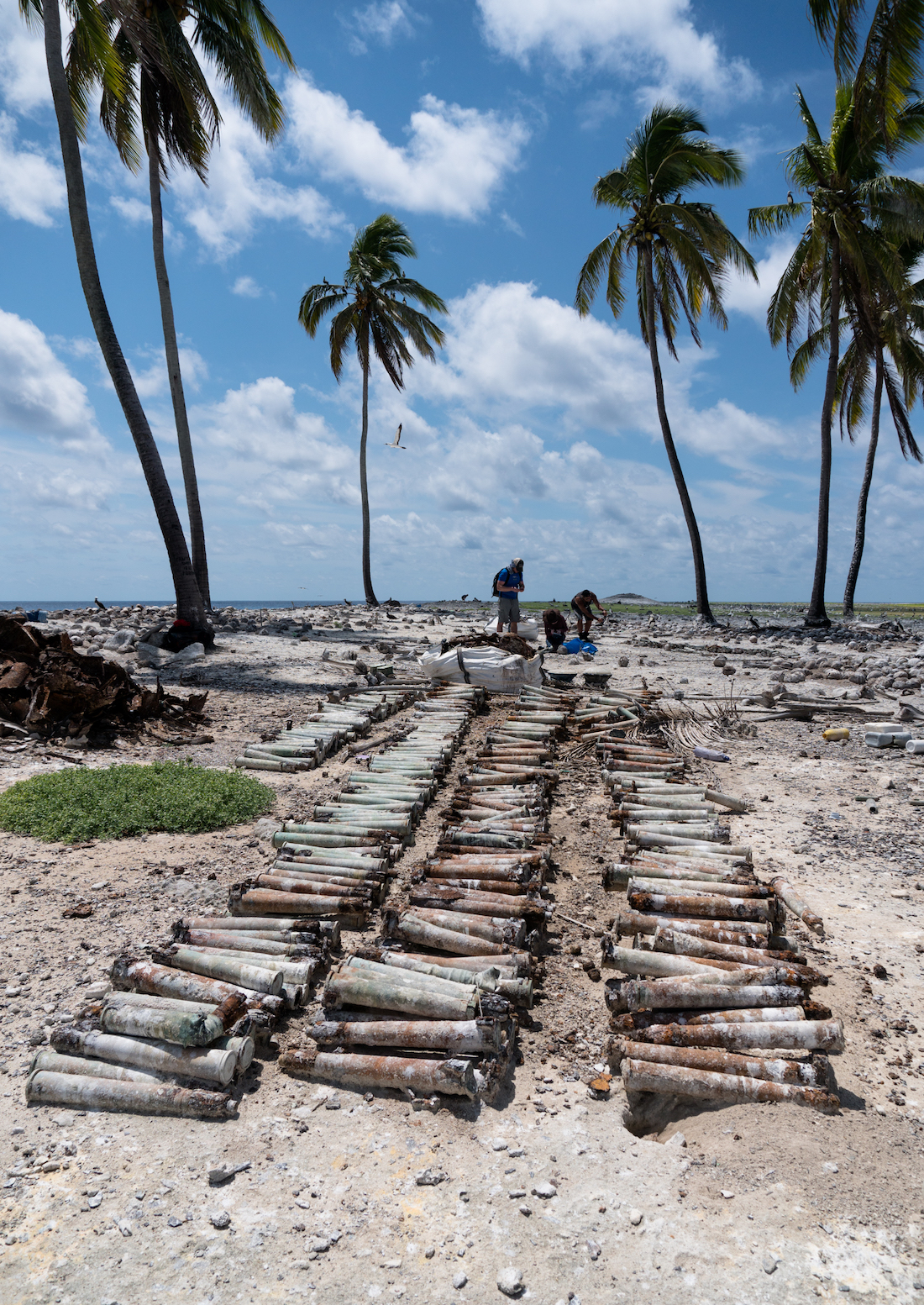
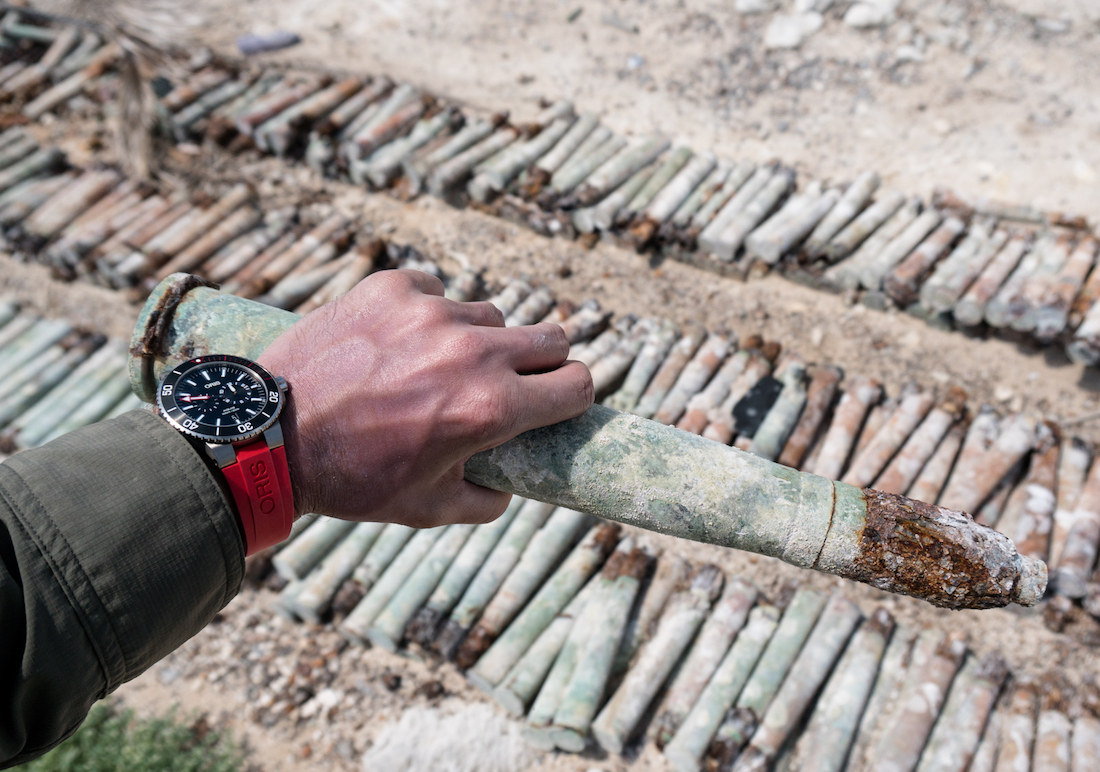
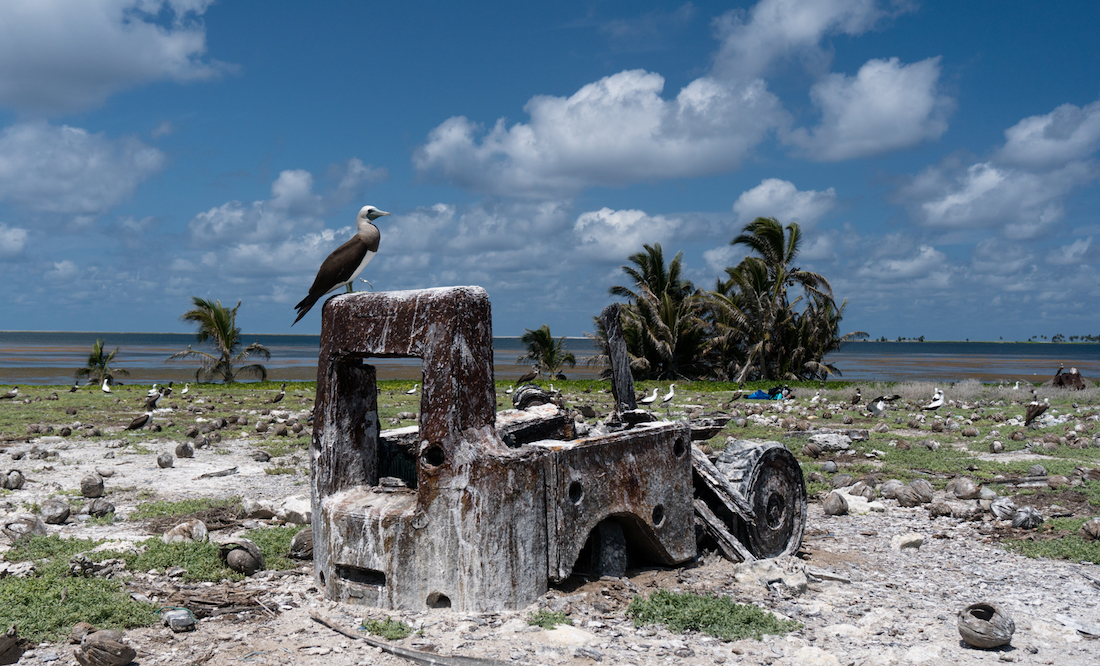
There is something Daliesque about the wider view of Clipperton, something strangely bent, askew, and otherworldly. By the time I returned to the Under Sea from my third and final trip to Clipperton, this is how I looked (below). Blistered, sunburnt, a little beat up, but alive in all the best ways. It had been a proper adventure, but we were on to the next location. The group had voted and we would leave Clipperton on the 8th, heading north to the island of Socorro to continue diving.
That evening, under the guidance of Dr. Mauricio Hoyos Padilla, the group took part in shark tagging. Sharks would be caught off the back of the boat using a barbless hook, have a wet towel placed over their eyes (this keeps them calm) and water poured over their gills so they could breathe. Once in place, the shark is identified, measured, a tiny biopsy is taken from its fin and, depending on the species and size of the shark, a transmitter is placed below the skin between its pectoral fins.
Most of these tasks were divided among the group (I got to measure the animal) and we waited at the back of the boat as bait was used to attract small sharks. During the roughly hour-long session, we were able to tag two small sharks, a Silvertip and a Galapagos. The event is frantic, with those playing an active role being surrounded by those hoping to capture the tagging on camera. Based in La Paz, Mexico, Dr. Mauricio has been researching shark populations in this area of the Pacific for many years and often works in Guadalupe, where he studies great white sharks. While undoubtedly a stressful event for the shark, the tagging is exciting and informs a greater project to understand shark migrations in the southern corridor from Cabo to Galapagos.

